New hemp-derived cannabis products seem to pop up every week. But, despite the strong hold potent THC alternatives have on the market, nonintoxicating cannabinoids are flourishing too—and creating their own confusion, especially among consumers seeking to relieve discomfort, pain, or stress.
Finding the best cannabinoid for your needs isn’t always easy. Serious research is still in the early stages, and there aren’t many definite answers about a given substance’s effects. Although CBD-based pharmaceuticals are available in the United States and the United Kingdom, they’re only used to treat a limited set of very serious conditions.
No other nonintoxicating cannabinoids have yet been approved for medical therapies—although, as we’ve noted, research is just beginning. That includes the bunch we’ll be exploring here, alongside CBD: CBDA, CBG, CBN, and CBC.
This guide will help you get started learning about these cannabinoids and their potential uses. Just make sure you’re experimenting with third-party tested products, checking that certificates of analysis (COAs) are in-date, and sticking to the manufacturer’s recommended dose.
CBD, CBDA, CBG, CBN, and CBC: an overview
We’re only skimming the surface here. Five cannabinoids may seem like a lot to cover in one go, but with over a hundred known to researchers, five isn’t many. Here’s what we’ll be taking a closer look at:
- Cannabidiol (CBD): The first major cannabinoid to catch on after hemp’s U.S. legalization. CBD is renowned for its physically and mentally soothing properties, as well as known and potential therapeutic uses, including epilepsy management.
- Cannabidiolic acid (CBDA): CBD’s inactive precursor. Converts into CBD with age, heat, or exposure to ultraviolet rays. True CBDA products are difficult to manufacture and aren’t widely available.
- Cannabigerol (CBG): CBG is at its most abundant early in hemp’s life cycle. Long before it’s converted by metabolites into CBD, CBC, or THC, CBG forms when CBGA is stripped of its carboxylic acid group. In addition to being the root compound of the major cannabinoids THC and CBD, CBG helps regulate endocannabinoid signaling.
- Cannabinol (CBN): CBN is the direct byproduct of THC’s degradation and the first cannabinoid ever identified and documented. While the mechanics behind the effect are unclear, CBN seems to help users fall and stay asleep.
- Cannabichromene (CBC): CBC was initially isolated in 1966. Research into its potential therapeutic uses has uncovered some unique possibilities over the past few years, including neural cell regeneration.
Each of these cannabinoids is being explored as a potential therapy. The details vary from one to the next, but all five appear to at least possess anti-inflammatory effects. CBD has, by far, received the most attention from researchers.
Legality
All five of these cannabinoids are federally legal in the United States, assuming the product being sold also contains less than 0.3% delta 9 THC by weight. The 2018 Farm Bill is responsible for hemp’s entry into the mainstream. Before its passage, there was no legal distinction between marijuana and hemp under the Controlled Substances Act (CSA).
Legal hemp is hotly debated by lawmakers. Psychotropic cannabinoids like delta 8 THC have received major backlash, with some U.S. states restricting or banning them outright. Nonintoxicating byproducts haven’t been ignored by lawmakers either, though the pushback has been milder. The further its effects from marijuana, the less likely a product is to be at the center of controversy.
While an attempt to shut down the industry is unlikely (and not exactly feasible at this point), it’s possible that Congress will change its approach to hemp-derived cannabinoids in the updated 2024 Farm Bill. The bottom line: hemp’s current legal status isn’t necessarily set in stone.
Do they get you high?
CBD alone won’t get you high, and neither will the other cannabinoids we’re looking at today.
Whether the cannabinoid is extracted from hemp or marijuana is irrelevant. To be intoxicating, a cannabinoid must effectively bind with the body’s CB1 cannabinoid receptors. The extent of this binding affinity varies drastically from one cannabinoid to another. For the average user, delta 10 THC isn’t going to hit as hard as delta 9 or delta 8.
CB1 activation triggers a rapid influx of dopamine in the brain. The higher your tolerance for THC, the more severely CB1 receptors are downregulated, and the milder your experience. You’ll need to consume increasingly large doses of weed to produce effects that once came easily.
Unlike THC, CBD doesn’t bind or directly interact with CB1 receptors. It actually seems to prevent psychotropic cannabinoids from latching on as securely—it’s a CB1 antagonist, as is CBG in specific contexts. Ingesting CBD with marijuana could even temper intoxication and get you less high.
Not all nonintoxicating cannabinoids are full-fledged CB1 antagonists like CBD. Sometimes, they even act as partial agonists (including CBN and occasionally CBG); they bind to CB1 receptors, just too weakly to get you high.
CBN is a potential exception, but not for most users. You’d need to consume extremely large quantities to feel intoxicated.
Side effects
Adverse or unexpected effects are always a possibility with any substance you consume. In the case of hemp-derived products, you must also be cautious not to ingest or inhale unwanted contaminants, since most states don’t mandate safety precautions.
Protect yourself from the worst of it by sticking to third-party tested products. If a retailer fails to publish COAs, move along and shop somewhere else.
Hemp’s long-term risks are unknown, but users have reported these short-term side effects:
- Stomach pain and nausea
- Diarrhea
- Drowsiness
- Dizziness
- Low blood pressure
- Mood changes
- Dry mouth and eyes
Types of products
You aren’t starved for choices when shopping for CBD products, but other nonintoxicating cannabinoids aren’t as easy to find.
The following types of products are all options if CBD is what you’re after. For the remaining cannabinoids we’re covering today, you’ll likely encounter just a few in each product category.
- Oils: It looks similar to the naked eye, but hemp oil isn’t what you’ll find in a cart or disposable vape. Each vial of oil contains a cannabinoid extract suspended in plant-based carrier oil. Hemp or CBD oils can be consumed sublingually, stirred into food, or applied directly to the skin.
- Tinctures: Although they’re often packaged similarly to oils, tinctures are usually alcohol-based. An authentic tincture doesn’t contain carrier oil and shouldn’t be applied directly to the skin, as it can cause irritation. Oils and tinctures have one thing in common: they are dangerous to vape.
- Gummies and other edibles: CBD gummies are everywhere, but you might prefer chocolate bars, morsels, or another candy infused with your hemp extract of choice.
- Vape pens: CBD vape pens can be either disposable or reusable. It’s also possible to produce authentic CBC, CBG, or CBN vape products, but that’s not the case for CBDA, which instantly converts to CBD when heated.
- Carts: Hemp or CBD vape carts are effortless to get the hang of, as long as you have a battery on hand. Refillable carts can also be loaded with your choice of hemp-derived vape oil.
- Flower: Standard hemp flower is already rich in CBD, but if you want the most bang for your buck, consider a high-CBD strain. Hemp bud is only high in other cannabinoids if it’s been specially bred or infused.
- Capsules: CBD capsules and pills are consumed orally and must be digested by the stomach, à la gummies or chocolate.
- Topicals: CBD topicals are best if you’re seeking to relieve particular aches and pains. Rather than entering your bloodstream, hemp-derived creams permeate the skin and target cells directly.
What is CBD?
CBD is the primary active constituent of hemp, outnumbering all other cannabinoids, terpenes, and flavonoids. It was first identified and isolated in 1940. Details about CBD’s chemical structure emerged over two decades later, in 1963.
The plant’s exact CBD concentration varies depending on strain and growing practices. Before it’s harvested and processed, hemp bud is lower in CBD than it is in the cannabinoid’s inactive precursor, CBDA (but more on that later). CBD doesn’t develop from non-cannabinoid chemicals within hemp. If CBD is present, other cannabinoids must have come before it.
THC and CBD are isomers. Although their effects are wildly different, they contain the same molecular components, sharing a formula (C21H30O2) and weight (314.47 g/mol). It’s the actual positioning of bonds and atoms that sets their structures apart. Small adjustments can make a big difference in a substance’s properties, including which human cannabinoid receptors it favors.
CBD benefits
If it weren’t for its growing list of potential benefits, CBD wouldn’t be famous.
Research is ongoing, but suspected benefits of CBD include:
- Neuroprotection
- Reduced inflammation
- Lower stress or anxiety
- Pain relief
- Better quality sleep
Epidiolex, a CBD-based medication, has been approved by the U.S. Food and Drug Administration (FDA) to treat two forms of drug-resistant epilepsy (Dravet syndrome and Lennox-Gastaut syndrome).
Does CBD show up on a drug test?
Pure CBD doesn’t produce the same metabolites as THC and won’t cause you to test positive on a drug test.
It’s still wise to steer clear of all cannabis products before a screening. Trace THC is sometimes present in CBD products, and over a period of extended use, this can build up in your system. Full-spectrum CBD puts you at the highest risk of testing positive. Rather than isolating CBD, these oils strive to preserve the “full spectrum” of cannabinoids and terpenes within the plant.
At the same time, don’t panic if you’re a regular CBD user with a drug test right around the corner. The likelihood that you’ll fail is slim.
Where to buy CBD
Among all five of the cannabinoids we’re looking at, CBD is by far the easiest to get your hands on. Products are also cheaper, because they’re easier for manufacturers to produce. You can find CBD through brick-and-mortar and online sellers, although not all options are created equal.
Remember, just because it's widely available doesn’t mean you should go with the first product you stumble across. Review every COA and research the manufacturer thoroughly before making a purchase. With CBD products in such high demand, there are plenty of grifters selling untested products.
What is CBDA?
CBDA is CBD’s inactive precursor. Forming after CBGA (the “mother cannabinoid”) interacts with the CBD synthase enzyme, CBDA is both acidic and chemically volatile, much like its parent. It doesn’t stabilize until farther down the biosynthetic road.
You can’t have CBD without CBDA. As the plant ages or is influenced by the elements, CBDA molecules lose their acidic carboxyl groups (two oxygen atoms and a carbon) and become CBD in a process known as decarboxylation. Due to this extra cluster of molecules, CBDA is heavier than its converted form. It has a molecular weight of 358.5 g/mol.
This also means that CBDA won’t convert into a perfectly equivalent amount of CBD. If you start with 20 milligrams of CBDA and apply heat, you’ll end up with around 17.54 milligrams of CBD.
Despite being so abundant in hemp, CBDA presents a unique challenge to extractors. It takes a great deal of finesse to isolate this cannabinoid without converting it into CBD along the way. Heat is often required just to manufacture weed oil—but that isn’t possible if the goal is to preserve CBDA. Water and solvents must instead be used to isolate CBDA, and it must be consumed without applying heat (so no vaping or smoking).
Although lacking in commercial availability, CBDA products are popular among users seeking a potent CBD alternative.
CBDA benefits
CBDA is playing catchup in sheer quantity of research, but from what we can tell, its benefits are similar to CBD. These include:
- Pain or inflammation relief
- Reduced anxiety
- Nausea prevention
- Antimicrobial effects
- Mental or physical relaxation
While CBDA could perform comparably to CBD in most of these areas, it seems to outshine its sibling at reducing acute or anticipatory nausea. However, no CBDA-based drugs have yet been developed and released to the public.
Does CBDA show up on a drug test?
No, pure CBDA won’t cause you to fail a drug test.
While acidic cannabinoids like THCA are far riskier bets, CBDA doesn’t convert into a CB1 agonist. There’s no guarantee that a precursor cannabinoid remains intact by the time you consume a product. Fortunately, even if CBDA converts, you’ll still be ingesting a cannabinoid that doesn’t become THC-COOH upon metabolization.
Where to buy CBDA
Although the cannabinoid is gaining attention, CBDA products are few and far between. This is one of the most challenging cannabinoids to access for consumers and manufacturers alike.
Before you start shopping around, make sure you’re looking for CBDA products that actually exist—and don’t take the brand’s word for it. You’ll come across a number of “CBDA vapes” online, despite this method of delivery being incompatible with the substance itself. Your CBDA turns into CBD before the vapor hits your throat.
Instead of vape products, seek out raw CBDA oils (full- or broad-spectrum), capsules, and topicals. You’ll find these through a growing collection of online sellers. Just expect to pay more than you would for a typical CBD product.
Funnily enough, standard hemp flower is quite high in CBDA, no infusion needed. You’d just need to consume the raw plant to access it.
What is CBN?
CBN was the first cannabinoid identified and documented in scientific literature. Records of it date all the way back to the late-1800s.
Cannabis research got off to a rocky start, which is obvious when we consider how poorly plant materials were handled and transported. We now understand CBN is a degraded form of THC. Much like acidic cannabinoids are activated when exposed to heat or sunlight, active cannabinoids can degrade under those same conditions.
Nineteenth-century researchers weren’t exactly familiar with marijuana’s chemical life cycle. Materials were processed and stored in environments that promoted degradation. In short, a good chunk of the THC intended for research is converted into CBN before examination. This led to misunderstandings about the plant's overall composition, as well as its effects.
Over the past few years, CBN has become famous for its alleged sleep-inducing properties. You’ll find anecdotes galore online. Studies are underway, but as of 2024, researchers are still uncertain about whether CBN has this effect and why.
CBN benefits
CBN’s supposed ability to help with sleep has overshadowed the compound’s other potential benefits.
Debate over how and why CBN has this effect is ongoing. Some academics have proposed that CBN’s influence on sleep comes down to marketing or a placebo effect, though a growing body of evidence suggests otherwise. Taking CBN before bed may improve your sleep quality or make it easier to drift off.
Other potential benefits include:
- Inflammation relief
- Glaucoma management
- Muscle pain relief
- Neuroprotection
Does CBN show up on a drug test?
It’s unclear whether CBN products are likely to make you fail a drug test.
On one hand, CBN itself probably won’t trigger a positive result. However, because CBN is a degraded form of THC, CBN products are more likely to trigger a false positive than those containing primarily CBD.
As a precaution, it’s a good idea to cut out all hemp use—especially CBN—before a drug screening.
Where to buy CBN
CBN has made a name for itself in the hemp sphere. You can find CBN products from a growing number of online sellers, although the cannabinoid’s popularity still pales in comparison to CBD. The majority of retailers have yet to offer it.
If you live in a legal state, CBN/THC blends are relatively common at dispensaries across the U.S. These products are almost always marketed as sleep aids. CBN oils and edibles are more common than other product types, whether online or from your local dispensary.
What is CBG?
CBG is a trace cannabinoid with a similar claim to fame as CBD.
Despite their structural and practical similarities, CBD and CBG are most abundant at different points in hemp’s life cycle. Much of the plant's CBG is converted into either CBD or CBC with age, leading mature plants to test higher for CBD than CBG. It’s also possible to breed CBG-rich hemp flower.
Researchers theorize that CBG, like CBD, may help moderate some of the worst side effects of THC, such as paranoia.
CBG benefits
CBG’s potential benefits are similar to CBD, although the real-world applications and effectiveness can differ. Users might experience:
- Reduced inflammation
- Chronic pain relief
- Nausea prevention
- Stress or anxiety relief
- Better sleep
Unlike CBD, CBG may stimulate appetite, rather than reducing it. This effect appears most prominent when consumed alongside low doses of THC.
Will CBG show up on a drug test?
No, CBG itself won’t show up on a drug test. True CBG isolates won’t cause you to fail.
Only cannabinoids that metabolize into THC-COOH will be detected by standard screening. Full-spectrum CBG products are popular, though, and they’re more likely than other varieties (including distillates and broad-spectrum oils) to contain trace levels of THC.
Where to buy CBG
CBG oil is relatively accessible online. You’re more likely to find CBG products in standard medicinal forms, meaning tinctures, topicals and capsules. High-CBG flower is an option for vapers and smokers.
What is CBC?
Despite its relative abundance in certain strains of hemp, less is known about CBC than other non-psychotropic cannabinoids.
CBC was first identified in 1966, just two years after the discovery of delta 9 THC, marijuana’s primary active constituent. We know that it’s a TRPA1 agonist with a low (but detectable) affinity for the CB1 and CB2 receptors in the human endocannabinoid system (ECS). Beyond that, we don’t know a lot. All we can do is wait for research to emerge.
CBC benefits
Its effects are poorly defined overall, but CBC seems to have unique and highly impressive benefits. These might include:
- Inflammation and pain relief
- Digestive support
- Chemoprevention
- Acne care
- Neural cell regeneration
CBC may also act as an antibiotic or antifungal agent, and could even be valuable in treating acute respiratory distress syndrome (ARDS), a frequent complication of sepsis.
Will CBC show up on a drug test?
No, like the other cannabinoids we’re covering today, CBC oil alone won’t cause you to fail a drug test. It doesn’t convert into THC-COOH after being metabolized by the liver.
Where to buy CBC
CBC products are a niche subsection of hemp. You can find them from a handful of brands, although options are limited.
The vast majority of CBC comes in tincture or oil form. Gummies and capsules are also available, as is an extremely limited assortment of vape products.
Comparing benefits: CBD vs. CBDA vs. CBG vs. CBN vs. CBC
The full scope of these cannabinoids’ therapeutic uses is unclear. We can’t make any definitive claims about which is best for a specific purpose, because we simply don’t have the answers yet. All we can do is make educated predictions based on the current research. Anecdotes are helpful, but they can’t tell us everything.
Which is best for pain?
CBD is always going to come out on top when we’re considering the sheer quantity of research. However, we still have just a cursory understanding of its analgesic effects.
A recent systematic review found that, in the majority of studies, CBD reduced chronic pain levels by up to 66 percent. Others found little to no change. Still, the promise is hard to ignore—especially considering CBD is so well-tolerated. Side effects are typically mild, which can’t be said about all painkillers.
CBDA seems to have a similar effect. One study found it to be more effective than CBD at reducing inflammation-related sensitivity to pain. Actually, in this case, an equivalent dose of CBD failed to do much of anything. This suggests that while both cannabinoids show promise as painkillers, their real-world applications could differ. We won’t get cannabinoid-based painkillers until researchers know which conditions to target.
Next up, it appears that CBC is the most potent TRPA1 agonist in cannabis. These are the same receptors responsible for CBD’s anti-inflammatory and analgesic effects, making it probable that CBC is at least as beneficial. We just don’t know with certainty how beneficial either cannabinoid is quite yet.
CBG might also reduce hypersensitivity to pain, and may be at its most effective when administered along with CBD. By activating both TRPV1 and CB2 receptors, CBG could exert these effects on multiple pain models, making it exceptionally versatile. The exact types of pain it could target are still being determined. On a consumer level, trial and error are needed to work out the best cannabinoid for your needs.
Evidence of CBN’s pain-relieving effects is scant by comparison, but it could help reduce joint and muscle discomfort, especially when combined with CBD.
Which is best for anxiety?
No cannabinoids have been proven to work as mental health treatments. As tempting as alternative therapies are on the surface, take everything you read with a grain of salt, and don’t compromise your emotional wellbeing along the way.
Clinical anxiety disorders (including generalized anxiety and panic disorder) can’t be treated with cannabis alone.
However, all five of the cannabinoids we’re discussing have some evidence (scientific or anecdotal) to back possible anti-anxiety effects, although the depth of that knowledge varies. We also don’t know the exact contexts in which these effects are beneficial.
Going off of both research and anecdotes, CBD, CBDA, and CBG may be especially effective for anxiety. One survey even identified anxiety as the most common motivator behind CBG use. Research also suggests that CBDA could outperform CBD at alleviating trauma-induced anxious behaviors. CBC and CBN are mainly linked to anxiety via user anecdotes.
Until we have more research to pinpoint the benefits, feel free to experiment with cannabinoids and try to find an option that gives you a mental lift
Which is best for sleep?
Going off user anecdotes, CBN is the clear favorite as a sleep aid. It also seems to be at its most effective when combined with THC, hence the popularity of 1:1 THC/CBN products.
But it’s not that simple. The details are muddy, and other cannabinoids may also improve sleep quality or quantity. CBD seems to have its own benefits in the sleep-wake cycle. Its relationship to sleep is just different from CBN’s—seemingly less direct, but perhaps no less valuable.
Interestingly, CBD doesn’t appear to have sedative effects of any kind. Chewing on a CBD gummy probably won’t make you sleepy unless other variables are at play. If you’re having trouble falling asleep due to inflammation or muscle soreness, and this discomfort is helped by CBD, then sleep may come easier.
The same goes for an overactive mind. Many users take CBD to better manage stress, another major culprit behind bad sleep. Just don’t try to substitute CBD for SSRIs or mental health medications prescribed by your doctor, even if it temporarily eases your mind.
Again, the effects of cannabinoids can be individualized. Some users find that CBD does little to reduce discomfort or stress, while another cannabinoid (such as CBC, CBG, or CBDA) does the trick. This could impact which cannabinoid best helps you fall and stay asleep, particularly if you’re not in need of sedation.
CBDA, CBG, CBN, and CBC: how do they compare to CBD?
CBD hogged the spotlight for the first few years of legal hemp. As time passes, more attention is being given to minor non-psychotropic cannabinoids.
It’s already obvious that CBD isn’t the only cannabinoid with promising therapeutic uses. We’re beginning to see areas where other nonintoxicating hemp products could be equally or more effective.
CBN vs. CBD
CBN and CBD have distinct appeals. If anything, that’s why many users opt to consume them both. You can soothe your body and mind with CBD during the day, then at night, use CBN as a possible natural sleep aid.
While CBD could play a role in improving sleep quality or regulating the sleep-wake cycle, it doesn’t seem to act as a sedative. Whether CBN has sedative qualities is still up for debate. It does appear to impact sleep in ways beyond general relaxation, though—especially when paired with THC.
Either way, taking both CBD and CBN together before bed probably won’t help you fall asleep faster than if you only consume CBN, or CBN and THC together. But if you find that CBD’s anti-inflammatory and analgesic effects lend a hand in ways that CBN (or THC) doesn’t, it could be the superior option for sleep. It all comes down to the individual.
CBN is a direct descendant of THC, while CBD is structurally related to THC but exists independently. Aged or mishandled marijuana is more likely to test high for CBN or CBNA than commercial hemp bud.
CBDA vs. CBD
Acids like CBDA are inactive and act as stepping stones to a cannabinoid’s active form.
CBDA isn’t the earliest cannabinoid in hemp’s biosynthetic pathway. First, CBGA is produced by olivetolic acid, a non-cannabinoid product of the cannabis plant. The CBDA enzyme can then convert CBGA into CBDA.
From there, oxygen-rich CBDA becomes CBD with heat or ultraviolet exposure. This conversion is a natural step in the plant’s life cycle. If left to its own devices, CBDA will decarboxylate and convert into CBD, with or without extreme elemental conditions. Of course, they speed up the process.
Due to the cannabinoid’s instability, CBDA products are far more difficult to manufacture than those high in CBD. Commercial CBDA is rare and primarily available from high-end hemp sellers. Authentic CBDA products aren’t usually cheap, either. If you’re on a tight budget, affordable CBD is much easier to access. Just steer clear of low-quality, untested products and you’re golden.
Standard distillates and weed oils require heat to produce, meaning that producing CBDA concentrates requires special techniques. CBDA also can’t be vaped without or cooked into edibles without transforming into CBD.
If you’re able to find and ingest raw CBDA, its benefits are likely similar to CBD’s anyway.
CBC vs. CBG vs. CBD
CBD, CBG, and CBC have some common qualities.
CBD and CBG are especially similar. Users may turn to either for the same reasons: pain and inflammation relief, stress reduction, or a general sense of calm and clarity. The only way to know which suits you best is through experimentation.
None of them will get you high, but CBD, CBC, and CBG each have their own relationships and interactions with the ECS. CBD is the only true CB1 antagonist of the bunch. Ingesting CBD before or with marijuana hinders the bond between CB1 receptors and THC, potentially dampening your high.
CBC has slight CB1 affinity, while CBG can act as either a partial agonist or competitive antagonist. Cannabinoids don’t always behave in one specific way.
Of the trio, CBC is the least researched, though it could possess novel benefits that aren’t as prominent in its siblings, as we discussed earlier. It’s also a CBD and THC isomer, while CBG features two additional hydrogen atoms.
The future of nonintoxicating hemp
It’s easy to get lost in the hype, but remember that cannabis research is still in the early stages. We’re miles away from having all of the answers.
In the meantime, avoid caving to deceptive marketing. Even cannabis products that feature beneficial cannabinoids may do nothing for you. And given the industry's lack of regulations, there’s a non-zero chance that the product contains little to none of whichever cannabinoid is advertised.
Keep an eye on hemp research as it emerges. We’re still barely past the starting line, but there seems to be an exciting road ahead.
President Trump promised during his election campaign to “save vaping," but his administration has undermined that goal at every turn.
The U.S. disposable vape market has grown to $2 billion in annual sales, although nearly none of the products are authorized by the FDA.
More than 30 bills that would impose severe restrictions vaping consumers’ product choices remain active in U.S. state legislatures.
The Freemax REXA PRO and REXA SMART are highly advanced pod vapes, offering seemingly endless features, beautiful touchscreens, and new DUOMAX pods.
The OXVA XLIM Pro 2 DNA is powered by a custom-made Evolv DNA chipset, offering a Replay function and dry hit protection. Read our review to find out more.
The SKE Bar is a 2 mL replaceable pod vape with a 500 mAh battery, a 1.2-ohm mesh coil, and 35 flavors to choose from in 2% nicotine.
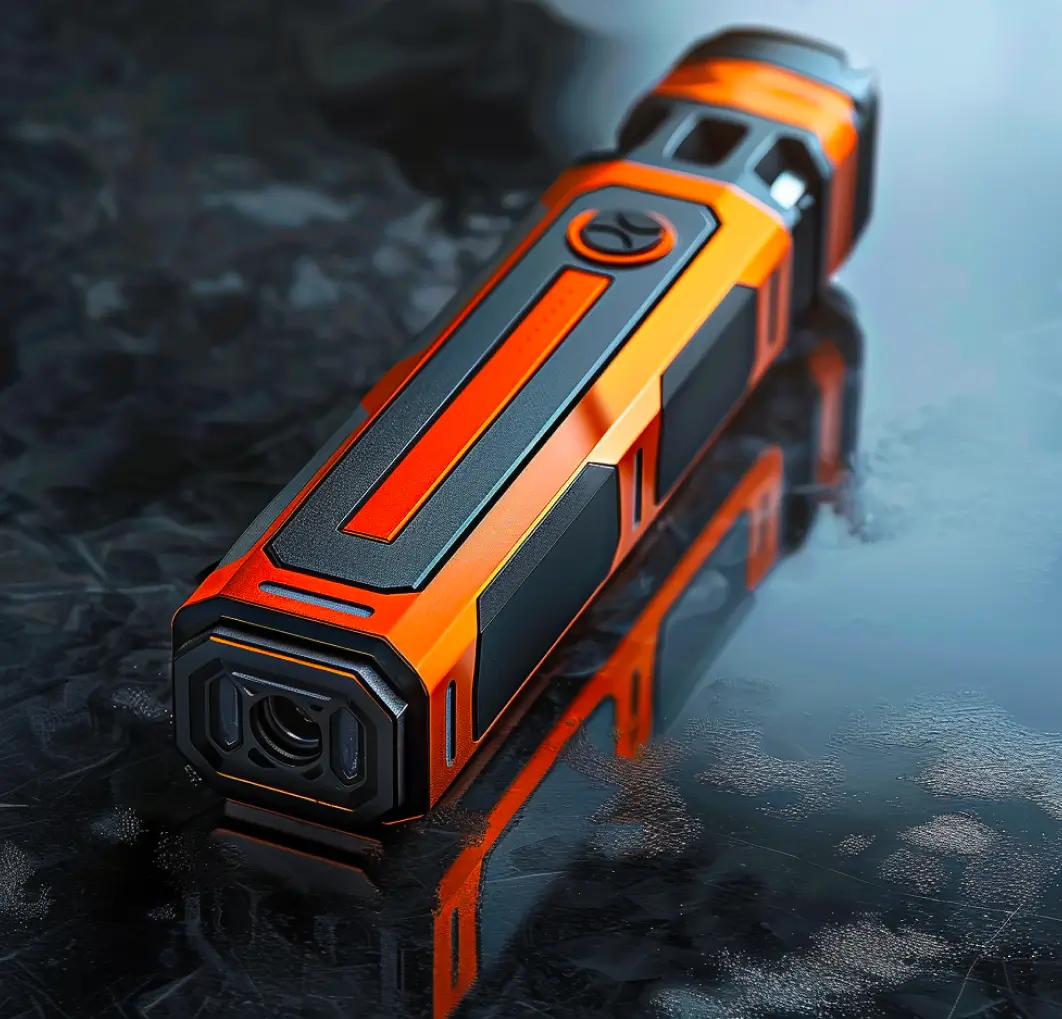
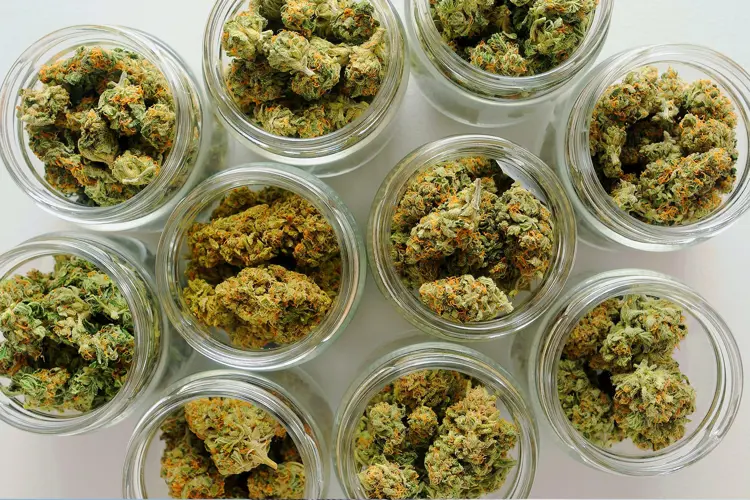
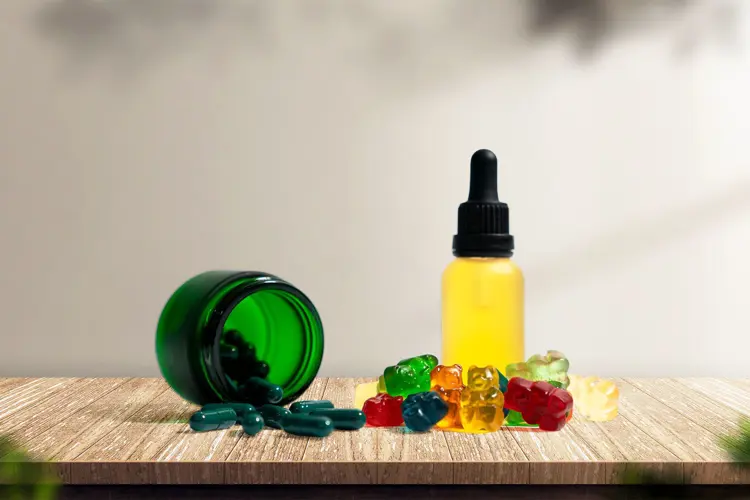
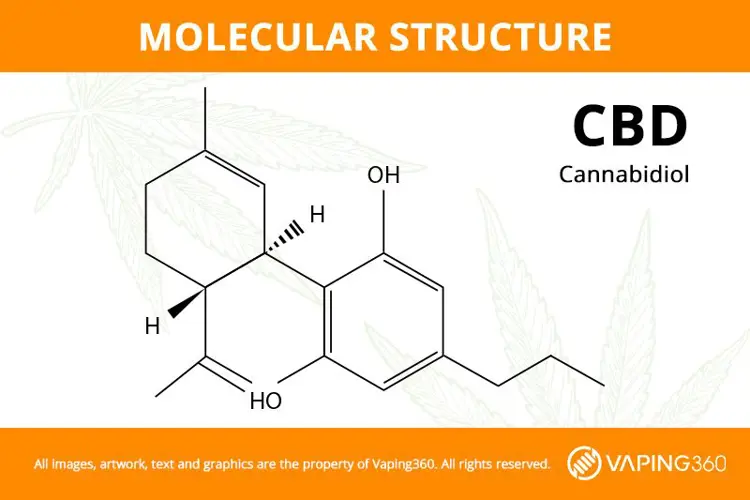
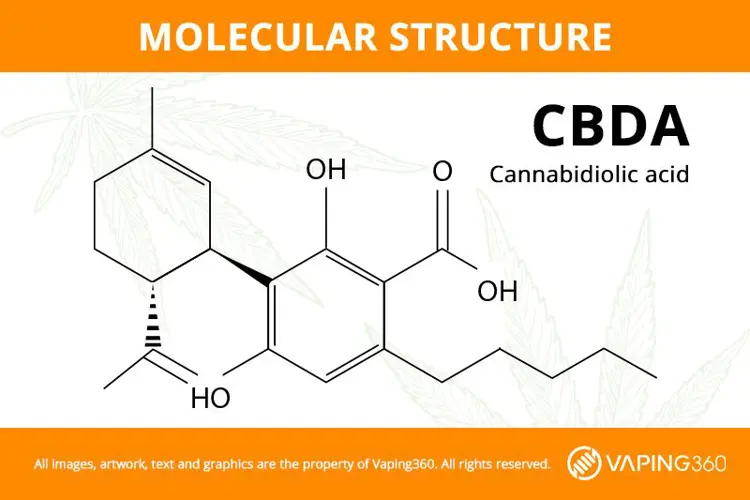
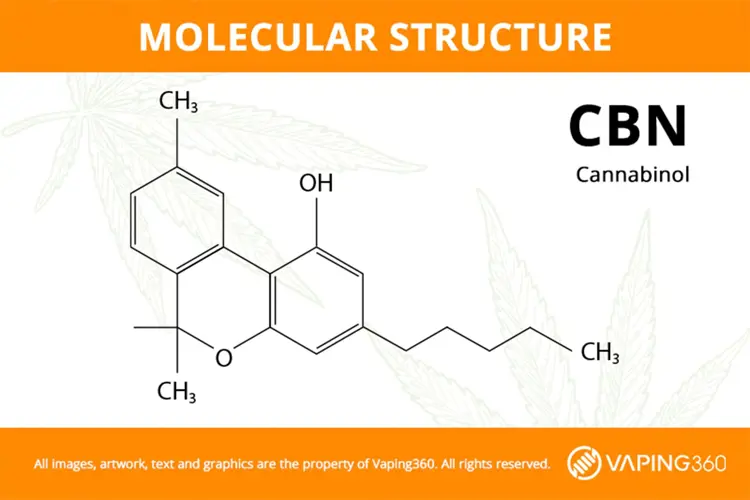
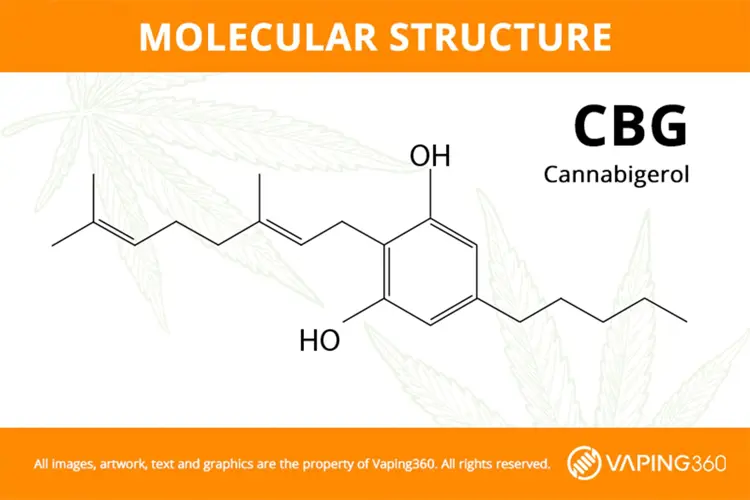
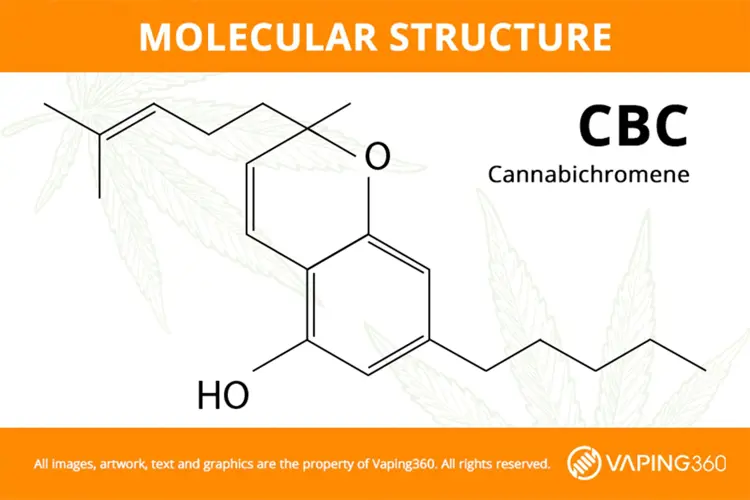


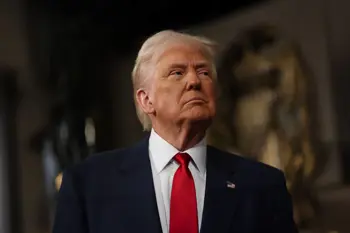

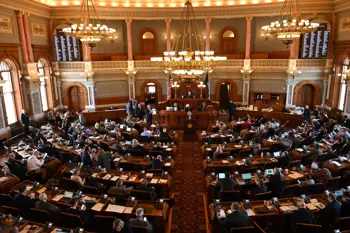
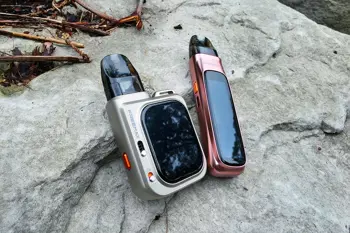
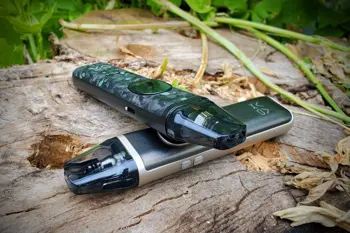
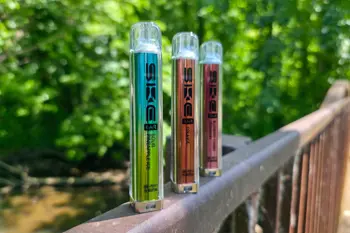
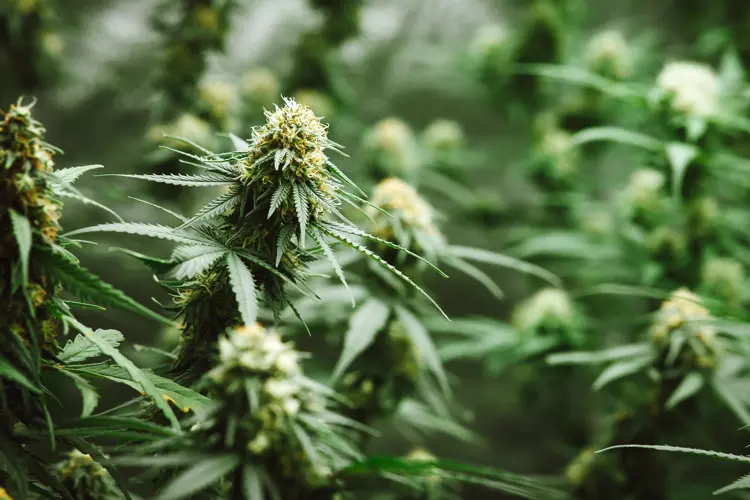
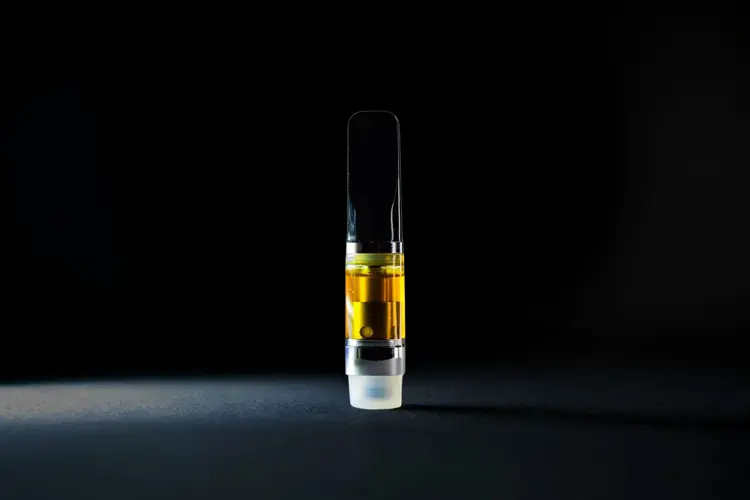
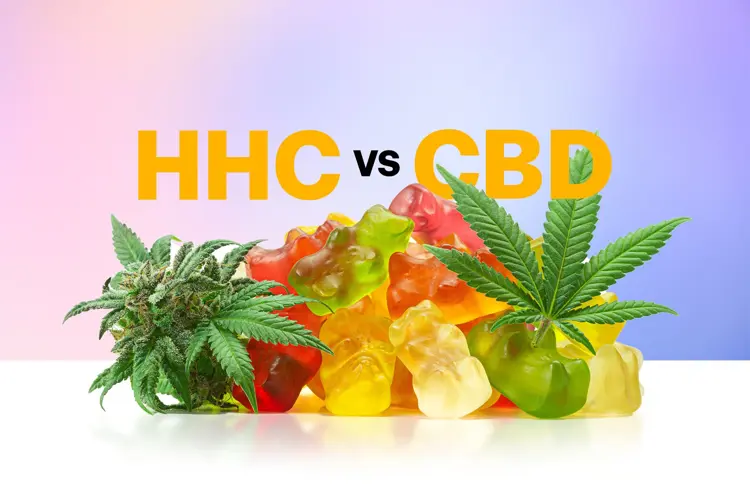
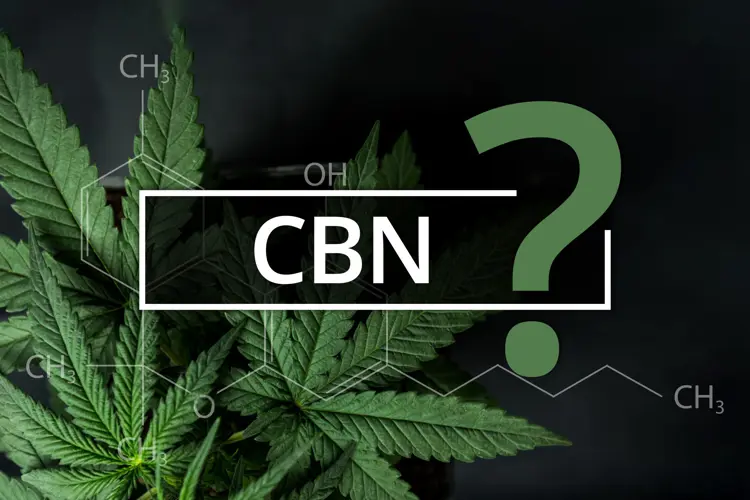
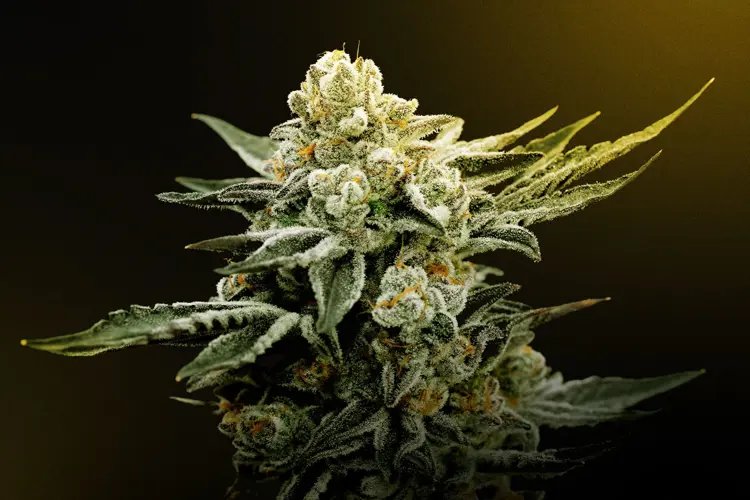
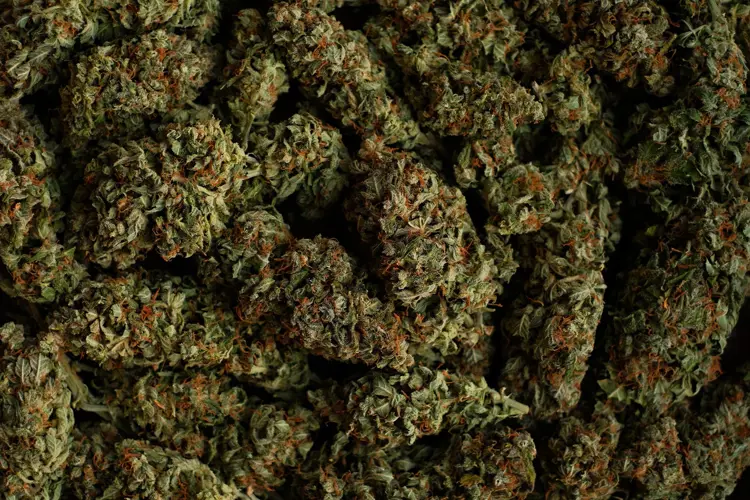
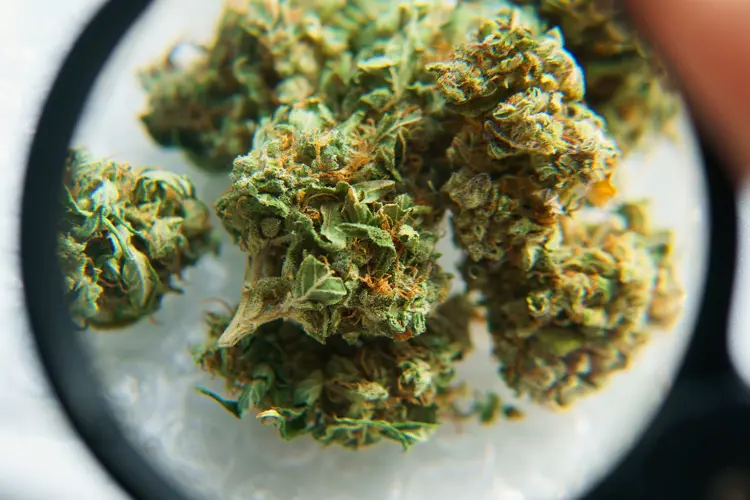




![Image for What Is THC-JD? Legality, Effects, Potency Explored [Update]](https://media.vaping360.com/images/what-is-thc-jd-thumbnail-20a40b517a.webp?imageType=Standard)
